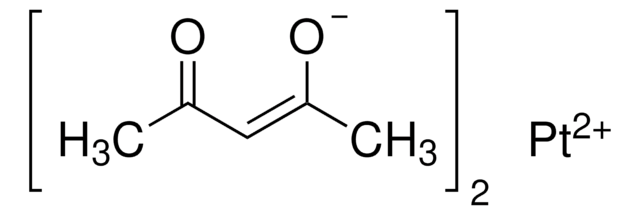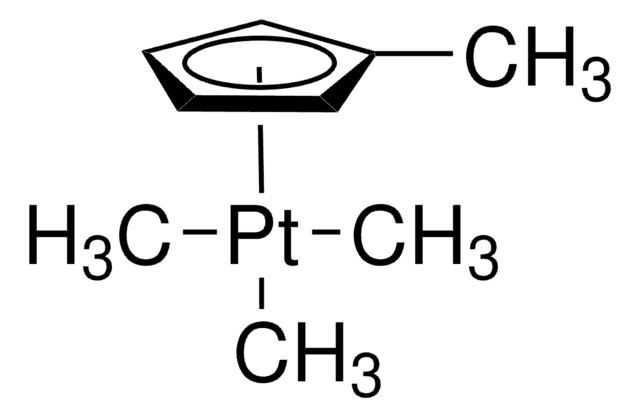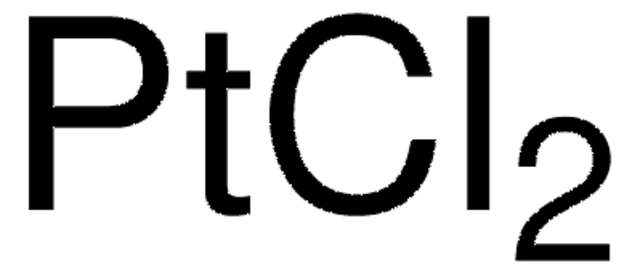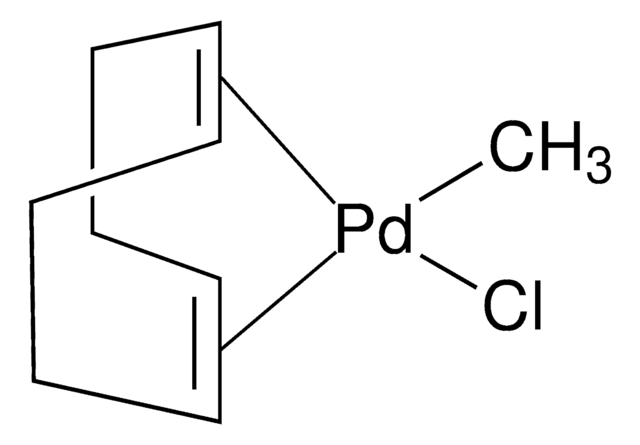282782
Platinum(II) acetylacetonate
97%
Sinónimos:
2,4-Pentanedione platinum(II) derivative, Pt(acac)2
About This Item
Productos recomendados
Nivel de calidad
Análisis
97%
formulario
solid
idoneidad de la reacción
core: platinum
reagent type: catalyst
mp
249-252 °C (lit.)
cadena SMILES
CC(=O)\C=C(\C)O[Pt]O\C(C)=C/C(C)=O
InChI
1S/2C5H8O2.Pt/c2*1-4(6)3-5(2)7;/h2*3,6H,1-2H3;/q;;+2/p-2/b2*4-3-;
Clave InChI
KLFRPGNCEJNEKU-FDGPNNRMSA-L
¿Está buscando productos similares? Visita Guía de comparación de productos
Descripción general
Aplicación
- In the preparation of N-allylanilines by the direct use of allylic alcohols. Anilines with electron-donating groups give good yields.
- For selective N-allylation of 2,3-disubstituted indoles in water.
It can be used as a starting material in the preparation of platinum-lead nanoparticles supported on carbon. The PtPb/C catalyst exhibits enhanced electrochemical activity towards methanol and formic acid oxidation.
Palabra de señalización
Warning
Frases de peligro
Clasificaciones de peligro
Acute Tox. 4 Dermal - Acute Tox. 4 Inhalation - Acute Tox. 4 Oral - Eye Irrit. 2 - Repr. 2 - Skin Irrit. 2 - STOT SE 3
Órganos de actuación
Respiratory system
Código de clase de almacenamiento
11 - Combustible Solids
Clase de riesgo para el agua (WGK)
WGK 3
Punto de inflamabilidad (°F)
Not applicable
Punto de inflamabilidad (°C)
Not applicable
Equipo de protección personal
Eyeshields, Gloves, type P3 (EN 143) respirator cartridges
Elija entre una de las versiones más recientes:
¿Ya tiene este producto?
Encuentre la documentación para los productos que ha comprado recientemente en la Biblioteca de documentos.
Los clientes también vieron
Artículos
Magnetism and magnetic materials have been of scientific interest for over 1,000 years. More recently, fundamental investigations have focused on exploring the various types of magnetic materials and understanding the magnetic effects created by electric currents.
Nuestro equipo de científicos tiene experiencia en todas las áreas de investigación: Ciencias de la vida, Ciencia de los materiales, Síntesis química, Cromatografía, Analítica y muchas otras.
Póngase en contacto con el Servicio técnico













